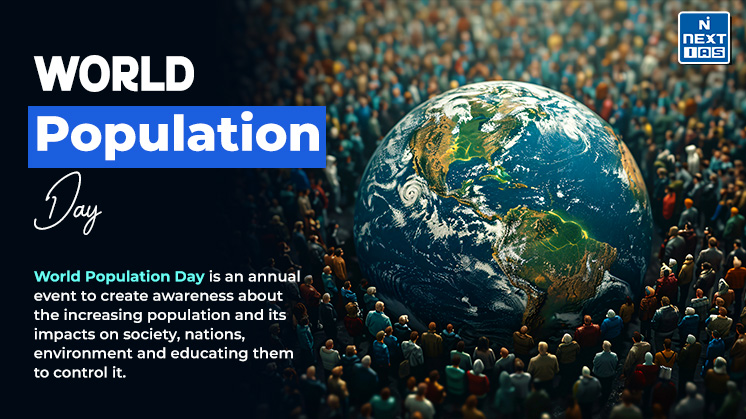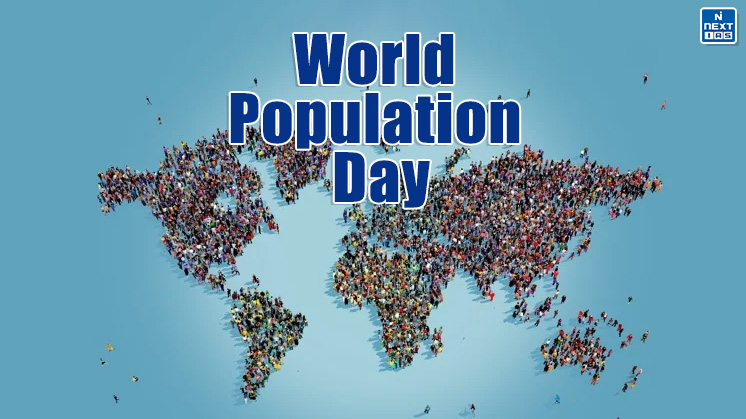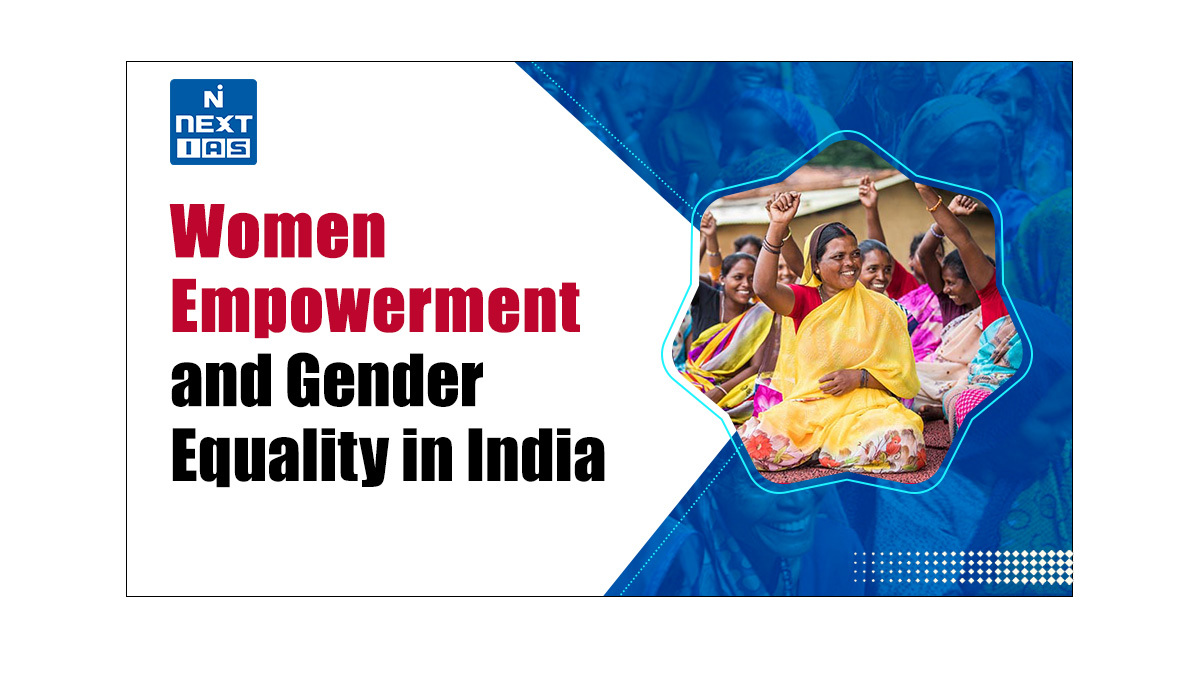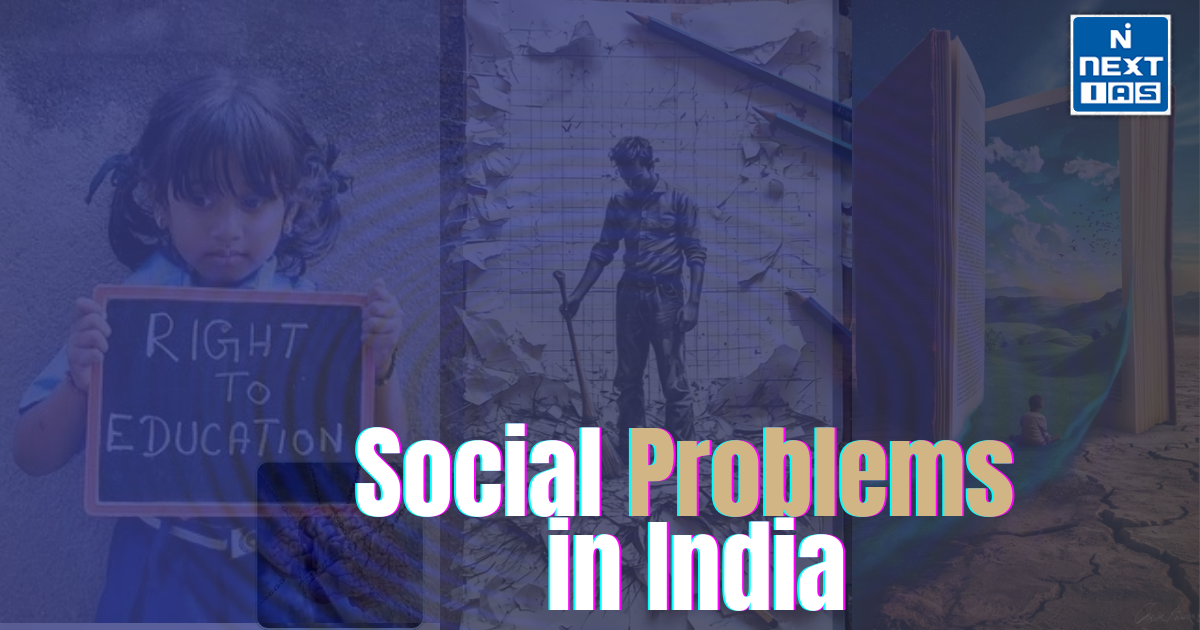
Since 11 July, the Global Population Day has been an occasion when the global community assembles to acknowledge the numerous intricate issues concerning population growth and their effects on development and sustainability. Also in this year, the world will celebrate World Population Day 2025 (WPD 2025) on 11 July 2025. While the world is preparing to address and apprehend the immediate population challenges, this article on World Population Day presents an account on its history, key facts, objectives, theme, importance, and more.
About World Population Day (WPD)
World Population Day is an international observance celebrated annually on July 11 to bring awareness to the varied issues of world population. The day is also called “International Population Day or World Population Day” and was established to celebrate the first Day of Five Billion on July 11, 1987, when the world’s population was officially termed around five billion. It is also a means to bring into focus the challenges and opportunities that global population trends present for sustainable development, health, and well-being across the world.

Key Facts about World Population Day
| Date | 11th July |
| Origin | This day traces its origin to the “Day of Five Billion” (July 11, 1987), when the global population reached approximately 5 billion. |
| Objective | To raise awareness about global population issues and their impact on sustainable development. |
| Theme | Theme changes annually, and is decided by the United Nations Development Program (UNDP) in coordination with United Nations Population Fund (UNFPA). |
| Theme 2025 | “Empowering young people to create the families they want in a fair and hopeful world” |
Theme of World Population Day 2025
- The United Nations has announced the theme for World Population Day 2025 as “Empowering young people to create the families they want in a fair and hopeful world.” This theme underscores the importance of youth agency, reproductive rights, and gender equality, highlighting the world’s largest generation of young people.
- Such text urges governments and societies to invest in quality education, healthcare, employment, and comprehensive family-planning services, with the help of which young people can seek to fashion their own future amid economic uncertainty, climate change, and demographic transitions in the first place.
- Giving the youth decision-making power about things such as marriage and parenthood will assure fairness, sustainability, and hope for the next generation.
History of World Population Day
Tracing the timeline of origins and evolution:
Day of Five Billion (1987)
- On July 11, 1987, the global population inched close to the five-billion mark. It was a landmark moment in world demography and attracted worldwide attention to the aspects of rapid population growth.
- This day focused the eyes of the world at sustainable development, resource management, and the pace of population expansion.
- Thus, that day’s quantifiable overwhelming response and the interest it generated made it imperative for population issues to be addressed on an ongoing basis through an institutionalized platform.
Establishment of World Population Day by UNDP (1989)
- The UNDP deemed a concerted focus on population matters necessary after the activities of the “Day of Five Billion” gained momentum. Therefore, in 1989, the UNDP Governing Council invited the observance of World Population Day every year on July 11 (the “Day of Five Billion”).
- The aim was to foster understanding and awareness of population issues and strengthen policy integration and relationship-building on these considerations.
United Nations General Assembly Resolution (1990)
- The United Nations General Assembly (UNGA) adopted Resolution 45/216 in December 1990, formally establishing the annual observance of World Population Day.
- This formal endorsement by the UN General Assembly solidified World Population Day as a key observance for raising awareness and promoting action on population dynamics.
First Celebration of World Population Day
The first World Population Day was celebrated on July 11, 1990, with participation from over 90 countries.
Present Status
- The inaugural observance in 1990 set the stage for continued international engagement and activities.
- The day has since been commemorated annually by UNFPA country offices, governments, and civil society organizations.
Celebrations of World Population Day
The following events commonly occur all across the world as part of World or International Population Day Celebrations:
- Awareness Campaigns: Government entities, NGOs, and community organizations hold awareness campaigns in an effort to educate the masses about population trends, family planning, reproductive health, and related sustainable development goals.
- Public Lectures and Discussions: Universities, research institutions, and advocacy groups organize public lectures, panel discussions, and debates on population-related topics.
- Art and Cultural Events: Cultural fairs, art exhibitions, and other cultural performance and competition events related to population dynamics and sustainable development are organized in many countries.
- Health Camps and Services: These camps and programs provide reproductive health services, family planning counselling, and maternal healthcare in areas where such services are really not easily accessible.
- Youth Engagement: Youth forums, educational workshops, and campaigns are organized to engage young people in discussions and activities related to population issues.
- Community Mobilization: Local communities participate in World Population Day by organizing rallies, marches, and community clean-up drives with a focus on environmental sustainability and responsible consumption patterns.
- Partnerships and Collaborations: International organizations like the United Nations Population Fund (UNFPA), along with governments and civil society organizations, collaborate to amplify the impact of World Population Day.
Objectives of World Population Day Celebration
- The goal of the very public awareness campaigns is to enlighten the harpist world upon global population concerns; i.e., demographic changes, trends, and projections, the impact therefrom on sustainable development.
- A force behind reproductive health services and the information on family planning and contraceptives must exist so that individuals and families may be enabled to make informed choices regarding their reproductive lives.
- The other issues to be presented were challenges of rapid population growth- scarcity of resources, destruction of the environment, and socio-economic disparity.
- Advocacy for gender equality and women’s empowerment will also be supported, emphasizing education, access to healthcare, and economic opportunities as key factors for population management and sustainable development.
- Another focus area will concern itself with the needs and aspirations of young people concerning reproductive health education, access to health services, and opportunities for education and employment.
- The promotion of substantive engagement among policymakers, stakeholders, and communities on population stabilization, equity-centered development, and environmental sustainability will be facilitated.
- To align World Population Day activities with the SDGs, particularly Goal 3 (Good Health and Well-being), Goal 5 (Gender Equality), Goal 10 (Reduced Inequalities), and Goal 12 (Responsible Consumption and Production).
- To promote the use of data and research to inform decision-making and policy formulation related to population dynamics, health outcomes, and socio-economic impacts.
- To recognize achievements in the field of population research, advocacy, and initiatives that contribute to global efforts in achieving sustainable population growth and development.
- To mobilize civil society organizations, youth groups, and community leaders to participate in educational activities, campaigns, and advocacy efforts focused on population issues.

Importance of World Population Day Celebrations
World Day of Population celebrations hold significant importance globally as explained below:
- Awareness Building and Education: Upon opening the day, its crucial exposures are presented to raise awareness of global population issues, including demographic trends, family planning, reproductive health, and sustainable development goals.
- Advocacy for Policies: It grants an opportunity for policymakers, governments, and NGOs to strengthen their advocacy for the development and adoption of policies and programs for addressing population issues.
- Human Rights and Empowerment: These celebrations underscore the paramount importance of human rights, with particular emphasis on the rights of women and reproductive rights.
- Access to voluntary family planning services allows the population to make educated decisions about their health and, subsequently, empowers society as a whole.
- Environmental Sustainability: Population management is one of the principles of environmental sustainability.
- As population issues are addressed, there will be World Population Day observance to ensure the adoption of sustainable patterns of consumption, conservation of natural resources, and prevention of climate change impacts.
- Global Cooperation: Establishing international cooperation and building partnerships to effectively confront shared population concerns.
- Collaborative efforts among countries, organizations, and communities are essential for achieving global development goals and improving the quality of life for all.
- Long-term Planning: The day prompts discussions on long-term planning and preparedness for future demographic shifts.
- Understanding population trends and their implications helps societies and governments to anticipate and respond proactively to social, economic, and environmental changes.
Conclusion
The celebrations of the World Population Day in reality extend beyond a single day of events and continue to foster worldwide dialogues and actions to consider the challenges and opportunities arising from global population growth. It is a great moment for reminding all of us about the need to handle population concerns in an integrated and sustained way. In an effort towards the pursuit of a complementary and equal future, this event supports awareness and the call for actions.
Speech on World Population Day
A good speech for this occassion can be prepared by addressing the following aspects of this special day:
- Introduce the Day and cover some key facts related to it.
- Talk about its origin and evolution.
- Mention some of the major objectives of its celebrations.
- Mention some major activities occurring as part of its celebrations.
- Towards the end part, mention some major significance of the Day
- Conclude by ensuring that population growth becomes a force for positive change, rather than a source of global challenges.
All these aspects have been covered in detail in the sections that have been mentioned above.
FAQs: World Population Day 2025 (WPD 2025)
What is the theme of World Population Day 2025?
The official theme for World Population Day 2025 is “Empowering young people to create the families they want in a fair and hopeful world”.
What is the World’s Population in 2025?
As per the United Nations, the world population is 8.0 billion in mid-November 2022.
Why is World Population Day celebrated on July 11th?
World Population Day, designed to highlight the urgency and significance of population issues, was established by the Governing Council of the United Nations Development Programme (UNDP) in 1989, following the widespread interest sparked by the “Day of Five Billion” observed on July 11, 1987.
Who is the father of World Population Day?
Dr. K.C. Zachariah is said to be the father of World Population Day.
What are the 10 countries with the largest population in 2025?
The most populous countries in the world, in descending order, are China, India, the United States, Indonesia, Pakistan, Brazil, Nigeria, Bangladesh, Russia, and Mexico.
Read this article in Hindi: विश्व जनसंख्या दिवस 2025
GS - 2




